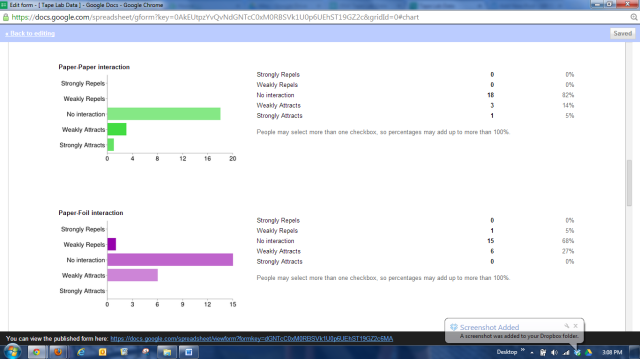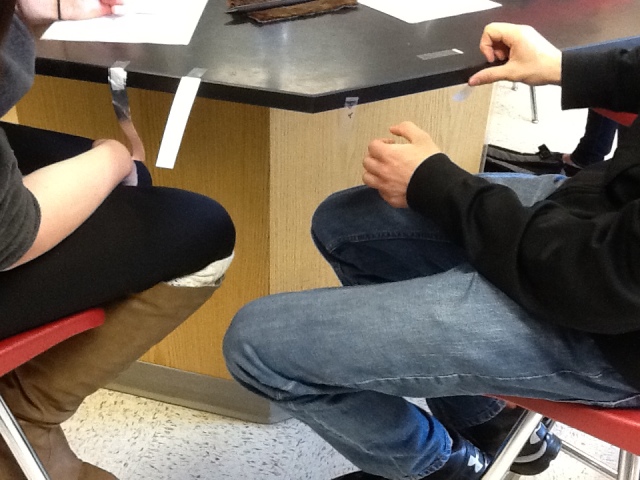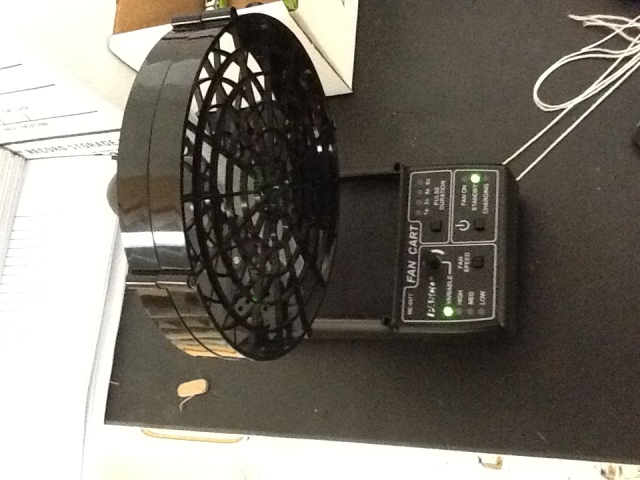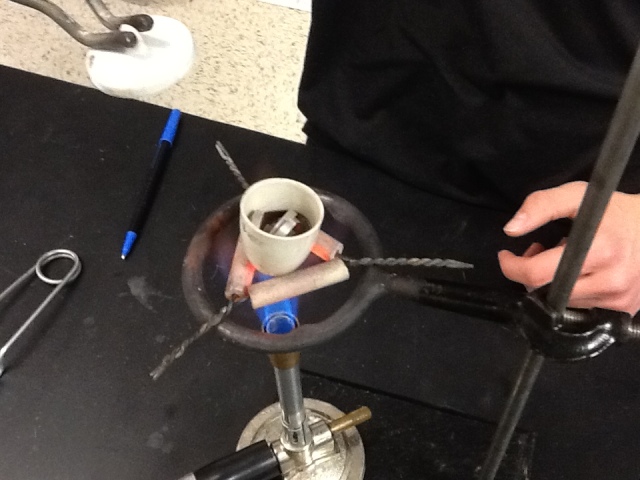Thurs. Mar 6, 2014

Physics 2 students were given the freedom to investigate anything they felt compelled to using a light source, converging lens, and viewing screen. Some groups choose to measure the distance from the light to lens and compare to the distance from the lens to image. This was good, and the data modeled the Lens Equation (1/do + 1/di = 1/f ) perfectly!
The above group (and one other one) choose to measure the distance from light to lens vs. the size (height) of the image produced. The board above shows their data. The raw data shows an inverse relationship. So we decided to graph y vs. 1/x, this straightened the data out, so good, right? Now comes the tough part. What is the data modeling for us? Here is where we are stuck. One thing to keep in mind the focal length of the lens used is 15.0 cm. (BTW, the other group used the same focal length lens and ended up with similar data.)
do = (14.67cm^2)(hi) + 14.91 cm
From what I can figure the y-intercept is the focal length of the lens, because you would get a image of size 0cm if the light was at the focal length of the lens. BUT, what is the slope indicating? What is with the units of cm^2? Is it a coincidence that this number is also close to the focal length, or is it something significant? What are we missing here. Any and all help will be appreciated. Please comment below or tweet me @MrBWysocki.
Thanks for the help!














